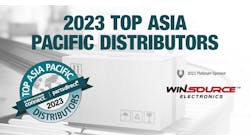In the electronics industry, outsourcing often refers to when an OEM turns over production of a printed circuit board, subsystem, or entire system to an electronics manufacturing services (EMS) provider.
However, distributors have long handled a fair amount of outsourcing from OEMs—and EMS providers—in the form of value-added (VA) and supply chain services. For years distributors have offered a wide range of such services for work that OEMs had handled in-house. For instance, many OEMs use distributors for integrated circuit (IC) programming, wire and cable harness assembly, battery pack and connector assembly, motor and power supply modification, as well as for inventory management and forecasting, among others.
OEMs have outsourced these tasks to distributors because distributors can do the work more efficiently and cost-effectively than the OEM can do in-house. OEMs and EMS providers outsource to distributors because such VA and supply chain services reduce their total cost. The OEM or EMS provider can operate leaner and not have to make investments in equipment necessary to do the work internally.
Though value-added services are not new, many distributors have expanded and/or enhanced them over the years as a way to become more important to customers and increase business and revenue with them.
That’s why it behooves buyers purchasing components from distributors to closely evaluate their VA and supply chain services capabilities. They should also check out the services of other distributors they are not using because, when it comes to services, not all distributors are created equal.
Some may offer soup-to-nuts services, while others are more specialized—often because of the products they carry. For instance, a connector specialist may be great at connector assembly, but lacks other VA services or supply chain capabilities.
Many buyers do business with a distributor only because of the distributor’s line card. Services may be secondary or an afterthought. However, such thinking may be short-sighted because VA and supply chain services can make an OEM or an EMS provider more competitive.
And though OEM buyers involved in outsourcing decisions must evaluate their distributors’ VA and supply chain services, they should also take a close look at the design services capabilities of their EMS providers. More EMS providers, both big and small, offer OEMs design help, and many in recent years have enhanced their design capabilities. Some larger providers have product innovation centers that can design a complete product or solve an arcane design issue for an OEM.
Many companies that use such services are startup OEMs that have an idea for a product, but lack the design and manufacturing skills needed to develop and build it. EMS providers can be a one-stop solution for the startup because they can design a product, or assist in the design, and then build the product in multiple regions of the world. EMS providers also have the supply chain network needed to support the manufacturing of the product. Established OEMs that already use EMS providers for manufacturing are also turning to EMS providers for design help. Design services capabilities can vary among EMS providers, but can include design for assembly, design for supply chain, prototyping, testing, and assistance with RF and microelectronics technologies.







